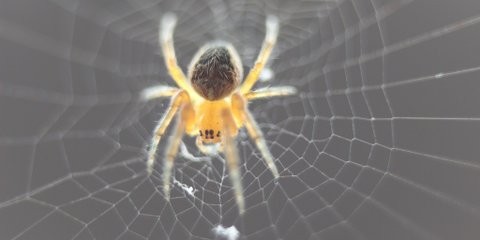Scientists have discovered that spraying grapheme on spiders causes them to spin super-strong silk that would be tough enough to catch a "falling plane." The experiment with carbon-coated spiders could result in future grapheme applications.
Graphene is a special structure of carbon atoms, also referred to as carbon nanotubes. Its arrangement is like a chain link fence or chicken wire.
The silk spun by the experiment's 15 participants is a maximum of 3.5 times stronger than the type manufactured by the giant riverine orb spider. That spider species produces the strongest silk on Earth.
The spider's silk is also one of the strongest biological materials on Earth. Basically tied as the other strongest natural substance is limpet teeth found on the aquatic snail.
Scientists at Italy's University of Trento combined grapheme, one of the strongest manmade materials; with spider silk, one of the toughest natural materials.
The researchers learned that after spraying the spiders with grapheme particles that were 300 nanometers wide, the spiders added the substance to their silk, according to Wired. A nanometer is one-billionth of a meter.
Nicola Pugno, the study's leader, says the super-strong silk had better "mechanical properties." It was even stronger than manmade "high performance" fibers.
The grapheme infusion did not result in every spider producing a super spider silk. Some of the arachnids spun a lower-quality silk, and four of the creatures died before they produced any silk.
The scientists do not fully understand the super-strong spider webs, according to Discovery. They have different theories.
One theory is that the spiders absorbed the materials, and then they merged into the spider silk. Another hypothesis is that the silk was coated with the grapheme and nanotubes. The super-strong web's function might have been to clean the 8-legged animals.
The experiment with carbon-coated spider silk could result in several graphene applications. That could include experiments with other animals and plants, and eventually lead to new types of bionic materials.



























